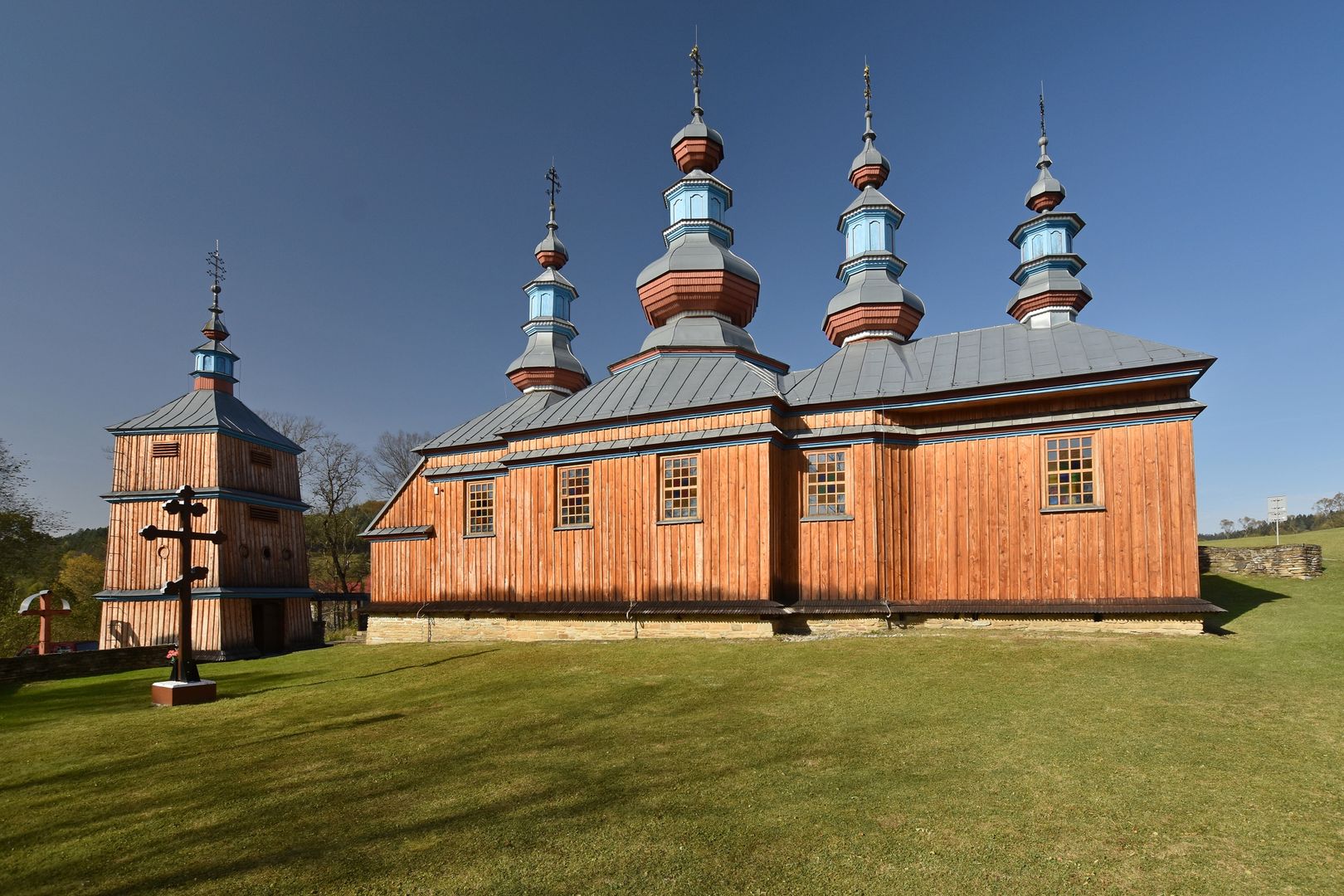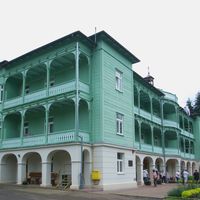Komańcza
6.19

Overview
Komańcza is a village in southeastern Poland, in the Podkarpackie Voivodeship, known for its rich history and wooden architecture. Nestled in the picturesque valley of the Osławica River and Barbarka Stream, it was once a royal village and held strategic importance as a trading hub. Its first recorded mention dates back to 1512. In the 19th century, Komańcza was owned by Alfred Lubaczewski, and in 1911 by Józef Mikołaj Potocki. A significant event in the village's history was the proclamation of the so-called Komańcza Republic in 1918, which, however, was short-lived. Komańcza was home to a Border Guard commissariat, and before World War II, it hosted the garrison of the "Komańcza" Battalion of the Border Protection Corps. After the war, the village witnessed the tragic fate of its Jewish population and experienced ethnic conflicts. Komańcza boasts numerous historic sites, including the Parish Church of the Protection of the Mother of God, built between 1800 and 1803 and rebuilt after a fire in 2006. The Nazarene Sisters' Monastery, constructed between 1927 and 1931, served as the internment site for Poland's Primate Stefan Wyszyński from 1955 to 1956. Other notable landmarks include a World War I military cemetery and the Church of St. Joseph, built between 1927 and 1949. Komańcza is also known for tourism, offering small accommodation bases and hiking trails, including the Main Beskid Trail. Since 1995, the village has hosted the Poland-Slovakia Borderland Meetings, featuring folk ensembles. It is also a memorial site for victims of the UPA. Interestingly, some religious ceremonies are jointly organized by Catholics and Greek Catholics, highlighting local unity. With its history and cultural heritage, Komańcza is an important landmark in the context of Bieszczady tradition and tourism.
Location
You can also find here:
2025 Wizytor | All Rights Reserved
